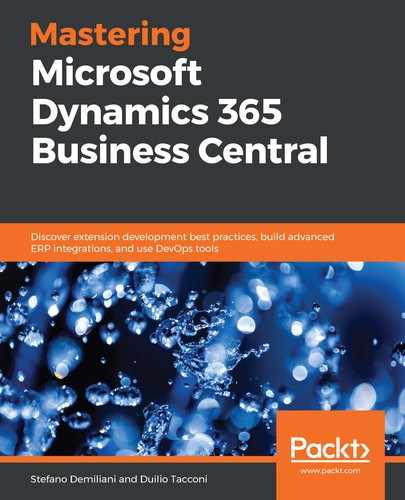If you opt to use self-deployed sandboxes, they will be based on Docker. Docker is the leading cross-platform software container environment. Since this is a book about Dynamics 365 Business Central, this section will only be a quick introduction to Docker, but if you want to learn more, there are excellent learning resources in the official documentation by Docker (https://docs.docker.com/) and Microsoft (https://docs.microsoft.com/en-us/virtualization/windowscontainers/about/index), both of which are very good starting points.
Dynamics 365 Business Central runs only on Windows, so when you're looking for Docker documentation, make sure that it is intended for Windows. While most of Docker is platform-independent, there are some platform-specific sections as well.
In order to follow the content of the following sections, you need to know about the following Docker basics:
- A Docker image is like a pre-built template with the minimum amount of OS binaries, libraries, and application binaries needed. The image can be identified by a name, such as Business Central / Sandbox. The exact image version can be specified with a tag. For example, 1910-cu1-dewould give you the October 19 release (1910), CU 1 (cu1), German version (de).
- A Docker container is an instance of an image with an immutable base (the files that are in the image) and its changes on top. A container is not a virtual machine (VM). It doesn't have a GUI or anything you can connect to by using the Remote Desktop Protocol (RDP).
- A Docker host is a (physical or virtual) machine where containers are running.
- A Docker registry is a place where you and others can upload (push) and download (pull) images. Specifically, images can be downloaded from repositories that are part of the registry.
All Dynamics 365 Business Central Docker images are available through the Microsoft Container Registry, which you can find at http://mcr.microsoft.comin the business central repository. It will be called sandbox or on-prem, so a typical address to pull a Dynamics 365 Business Central on-premise image from is mcr.microsoft.com/businesscentral/onprem:1810-cu5-de.
For previews of new and upcoming releases, there is also a special repository called bcinsider.azurecr.io, but you need credentials to access it. Microsoft provides those credentials through the Ready to Go! program on collaborate (https://docs.microsoft.com/en-us/collaborate/).
The scripts that are used to create and run the Dynamics 365 Business Central images are open source and available at https://github.com/Microsoft/nav-docker.
It is also worth noting that while these images are called business central, they also contain a SQL Server for the database, an IIS for the Web Client, and file sharing by default.
